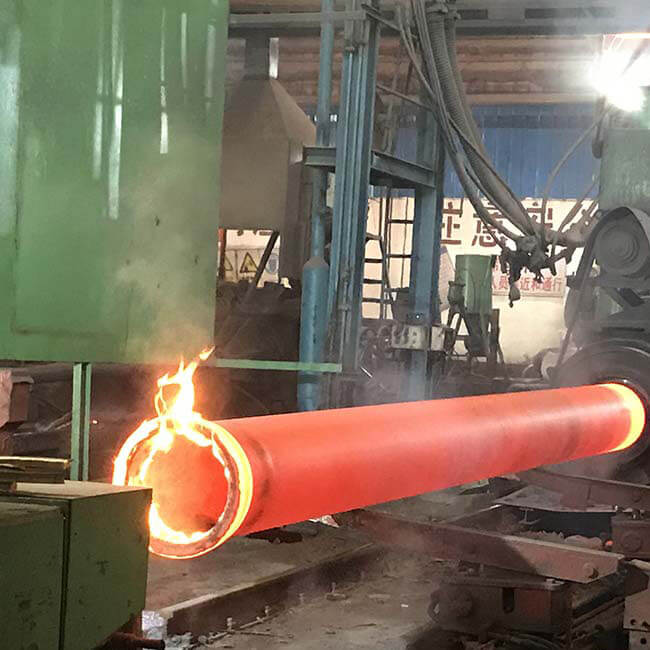Date: Dec. 25, 2020
Ductile iron pipe is mainly called a centrifugal ductile iron pipe. It has the essence of iron, the properties of steel, excellent anti-corrosion performance, good ductility, good sealing effect, easy installation, and is mainly used for water supply, gas transmission, and transportation of municipal, industrial and mining enterprises. It is the first choice for water supply pipes and has a high-cost performance. The ductile iron pipe supplier will explain the selection and use points of ductile iron pipes for you.
Ductile iron pipe compared with PE pipe
Compared with PE pipes, ductile ink pipes are easier and faster to install than PE pipes in terms of installation time, and have better internal and external pressure after installation; from the perspective of airtightness and corrosion resistance, ductile ink tubes have better airtightness after installation, and A variety of anti-corrosion methods can be used to improve the anti-corrosion performance; from the perspective of hydraulic performance, because the specifications of ductile pipes generally refer to the inner diameter, the specifications of PE pipes generally refer to the outer diameter. In terms of comprehensive installation and maintenance costs, the ductile tube has a more superior cost performance. The inner wall is sprayed with zinc, cement mortar and anticorrosive materials.
Recommendations for the selection of ductile iron pipes
1. The selection of ductile iron pipes should be based on the specific conditions of the installation site, and the interface between straight pipes and fittings should be selected.
2. The rubber ring is usually made of NBR, SBR, EPDM and other materials.
3. The choice of coating: choose a suitable coating according to the internal and external conditions of use. The existing inner coatings are epoxy resin, polyurethane inner and outer coatings, PE film coatings and other new products of ductile iron pipes, and their performance should be understood in detail when selecting them.

The use points of ductile iron pipe
1. Trench excavation
The width of the groove bottom should be calculated as follows: B=D1+2(b1+b2)
Where: B—the width of excavation at the bottom of the pipeline trench (mm) D1—the width of the outer edge of the pipeline structure (mm) b1—the width of the working surface on one side of the pipeline (mm) b2—the width of the support on one side of the pipeline (mm)
2. Groove support
According to the trench soil quality, groundwater, slotted section, load conditions and other factors, the design is required to be firm and reliable, to prevent collapse, and the support must not hinder the down pipe and stable pipe.
3. Set up buttresses at the turn
Buttresses should be provided at the turning point of the T-shaped joint pipeline in the vertical or horizontal direction. The size of the buttress should be determined by calculation based on factors such as pipe diameter, rotation angle, and working pressure.
4. Protective measures
When transporting drinking water, the pipeline should not pass through the poisonous polluted area. If it must pass, protective measures should be taken.
5. Calculate buttress
All the ductile iron pipelines connected by sockets must be supported by calculation. Refer to the National Building Standard Design Atlas 10S505 "Flexible Interface Water Supply Pipeline Support".
6. Choose a coating
The outer anti-corrosion coating of ductile iron pipe should be galvanized and epoxy asphalt coating or a coating with higher requirements according to the soil condition of the pipe.
7. Solution disinfection
After the pipeline is installed and the pressure test is qualified, it should be rinsed with low chloride ion water and disinfected with 0.03% potassium permanganate aqueous solution.
- Previous: None
- Next: What Do You Know about Ductile Iron Pipe?
 Español
Español English
English Русский
Русский العربية
العربية Français
Français